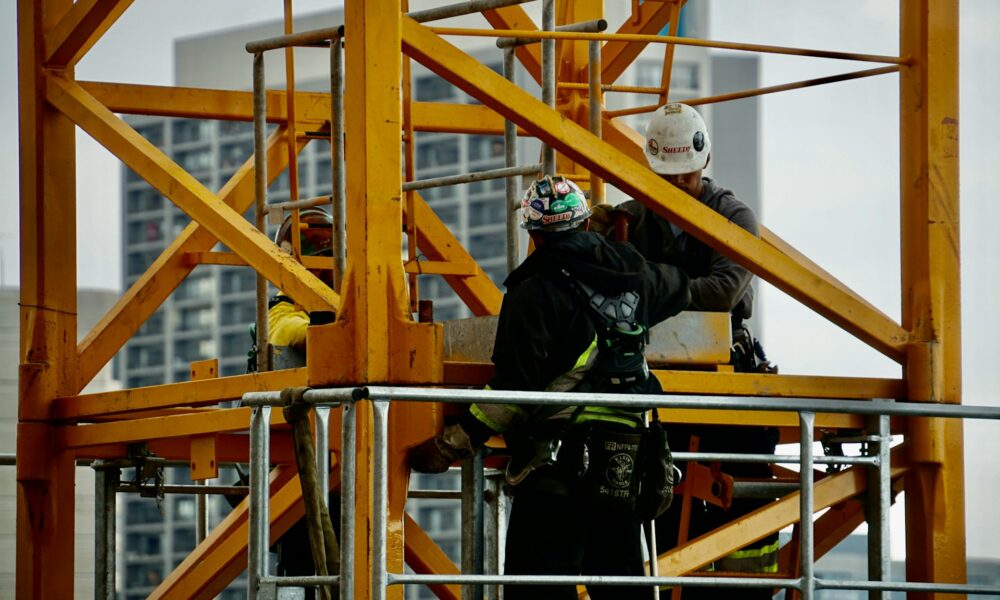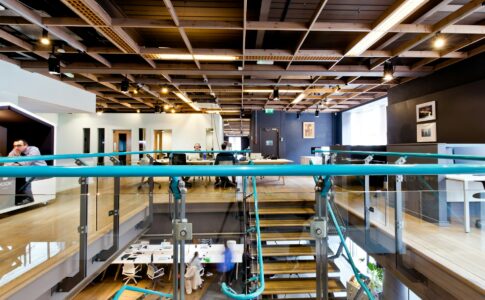Concrete cutting is an essential part of many construction and renovation projects. While it enables builders to shape and manage structures as needed, the process comes with inherent risks.
Proper safety measures, equipment handling, and hazard assessments ensure that projects are completed efficiently without compromising the well-being of workers.
This blog provides practical tips and best practices for ensuring job site safety during concrete cutting projects. From the correct use of personal protective equipment (PPE) to strategies for managing dust and noise, we’ll cover everything you need to know to keep your team safe.
Assess the Site Before You Start
Conduct a Comprehensive Hazard Assessment
Before any concrete cutting project begins, it’s essential to assess the risks present at the job site. Look for potential hazards such as uneven surfaces, electrical wiring, or confined spaces. A proper hazard assessment identifies risks so they can be mitigated before work begins.
Keeping a detailed checklist of the environmental conditions and materials being cut ensures you’re prepared for what lies ahead. For instance, a confined space entry requires a specific set of safety protocols to make sure workers are fully protected.
Prioritize Job Site Safety Protocols
Establishing clear job site safety rules is non-negotiable. This includes training workers about emergency procedures, safe handling of concrete cutting equipment, and proper communication tools. Every team member must know how to identify and react to potential hazards efficiently.
Use the Right Tools for the Job
Choose the Appropriate Concrete Cutting Equipment
Whether you’re using hand sawing tools or powered cutting machines, selecting the right equipment for the specific project is crucial. Hand sawing is excellent for smaller, more precise cuts, while larger tools like wall saws or floor saws handle heavy-duty applications.
Ensure all concrete cutting equipment is inspected for wear and tear before operation. Faulty equipment increases the risk of accidents and can slow down progress on-site.
Train Operators Properly
All workers handling equipment must be properly trained to use it safely and efficiently. This includes understanding the settings, maximum capacities, and the correct way to shut down machinery to avoid malfunctions.
Untrained operators are not only at risk of personal injury but can also compromise the safety of those around them.
Invest in Personal Protective Equipment (PPE)
Essential Protective Gear for Concrete Cutting
Personal protective equipment (PPE) is your first line of defense against potential injuries. Workers should always wear:
- Safety goggles: Protect eyes from debris and dust.
- Hearing protection equipment: Reduce the impact of loud machinery on hearing.
- Heavy-duty gloves: Ensure a firm grip and protect hands during operation.
- Respirators or masks: Prevent inhalation of dust and harmful particles.
- Steel-toe boots: Guard against falling equipment or collapsing debris.
All PPE should meet industry standards and be regularly inspected to ensure it provides sufficient protection.
Wearing and Maintaining PPE Correctly
Simply owning PPE isn’t enough; workers must use it properly. Ensure all team members understand how to correctly wear and adjust their equipment. Additionally, PPE should be cleaned and maintained regularly to retain its effectiveness and longevity.
Manage Dust and Noise Effectively
Implement Dust Control Measures
Concrete cutting generates harmful dust that can lead to respiratory problems. To manage this risk:
- Use water spray systems to suppress the dust.
- Equip cutting tools with built-in vacuum systems to collect debris.
- Ventilate confined spaces to maintain air quality.
Not only does efficient dust control protect workers’ health, but it also ensures greater visibility and a cleaner work environment.
Reduce Noise on Site
Prolonged exposure to loud noise can cause hearing damage. Noise reduction strategies, such as using sound-dampening barriers and ensuring machinery operates within recommended sound levels, go a long way.
Additionally, hearing protection equipment like earplugs and earmuffs should be readily available and mandatory on-site.
Plan for Confined Spaces
Precautions for Confined Space Entry
Cutting concrete in confined spaces adds another layer of complexity and risk. Before entry, ensure the area is adequately ventilated, and confirm that no harmful gases are present.
Workers should also wear full PPE and follow a buddy system, where another worker remains stationed outside the confined area for added safety. Clear communication is key in confined spaces. Equip workers with two-way communication devices to ensure they can stay in contact at all times.
Monitor Conditions Regularly
Conditions in confined spaces can change unpredictably. Continuously monitor air quality, temperature, and environmental factors to guarantee worker safety throughout the project.
Develop a Concrete Cutting Safety Plan
Written Safety Procedures
Establishing a documented concrete cutting safety plan is critical. This plan should detail the operation of equipment, the use of PPE, emergency protocols, and dust and noise management practices. A well-thought-out safety plan ensures everyone on-site has a clear reference point for safe operations.
Enforce Compliance Ruthlessly
Safety only works when enforced consistently. Supervisors and project managers should emphasize the importance of compliance and address any lapses immediately. Make safety training a recurring part of the work culture to keep personnel informed and vigilant.
Think Proactively About Worker Safety
Taking proactive steps ensures safety remains at the forefront of concrete cutting projects. By planning, investing in quality equipment, ensuring the proper use of PPE, and controlling environmental factors like dust and noise, your team can achieve both safety and productivity.
Remember, safety is not just a guideline—it’s an integral part of the project. A safe cutting team is a more efficient and successful team.




